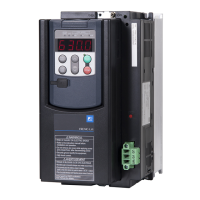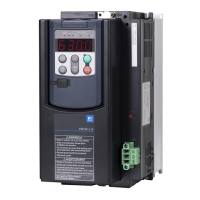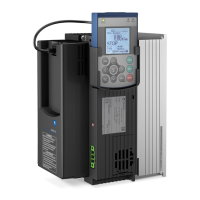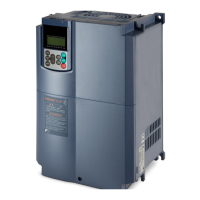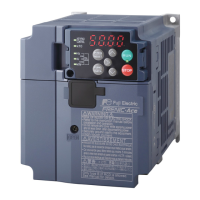1-5
1.3.2 Storage environment
The storage environment in which the inverter should be stored after purchase differs from the usage
environment. Store the inverter in an environment that satisfies the requirements listed below.
[1] Temporary storage
Table1.1 Storage and Transport Environments
The inverter must not be exposed to dust, direct sunlight, corrosive or flammable
gases, oil mist, vapor, water drops or vibration. The atmosphere must contain only
a low level of salt (0.01 mg/cm2 or less per year).
*1 Assuming comparatively short time storage, e.g., during transportation or the like.
*2 Even if the humidity is within the specified requirements, avoid such places where the inverter will be
subjected to sudden changes in temperature that will cause condensation or freezing.
Precautions for temporary storage
(1) Do not leave the inverter directly on the floor.
(2) If the environment does not satisfy the specified requirements listed in Table1.1 wrap the inverter in an
airtight vinyl sheet or the like for storage.
(3) If the inverter is to be stored in a high-humidity environment, put a drying agent (such as silica gel) in the
airtight package described in (2) above.
[2] Long-term storage
The long-term storage method of the inverter varies largely according to the environment of the storage site.
General storage methods are described below.
(1) The storage site must satisfy the requirements specified for temporary storage.
However, for storage exceeding three months, the surrounding temperature range should be within the
range from -10 to +30°C. This is to prevent electrolytic capacitors in the inverter from deterioration.
(2) The package must be airtight to protect the inverter from moisture. Add a drying agent inside the package
to maintain the relative humidity inside the package within 70%.
(3) If the inverter has been installed to the equipment or panel at construction sites where it may be subjected
to humidity, dust or dirt, then temporarily remove the inverter and store it in the environment specified in
Table1.1.
Precautions for storage over 1 year
If the inverter has not been powered on for a long time, the property of the electrolytic capacitors may
deteriorate. Power the inverters on once a year and keep the inverters powered on for 30 to 60 minutes. Do not
connect the inverters to the load circuit (secondary side) neither run the inverter.
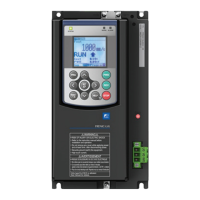
